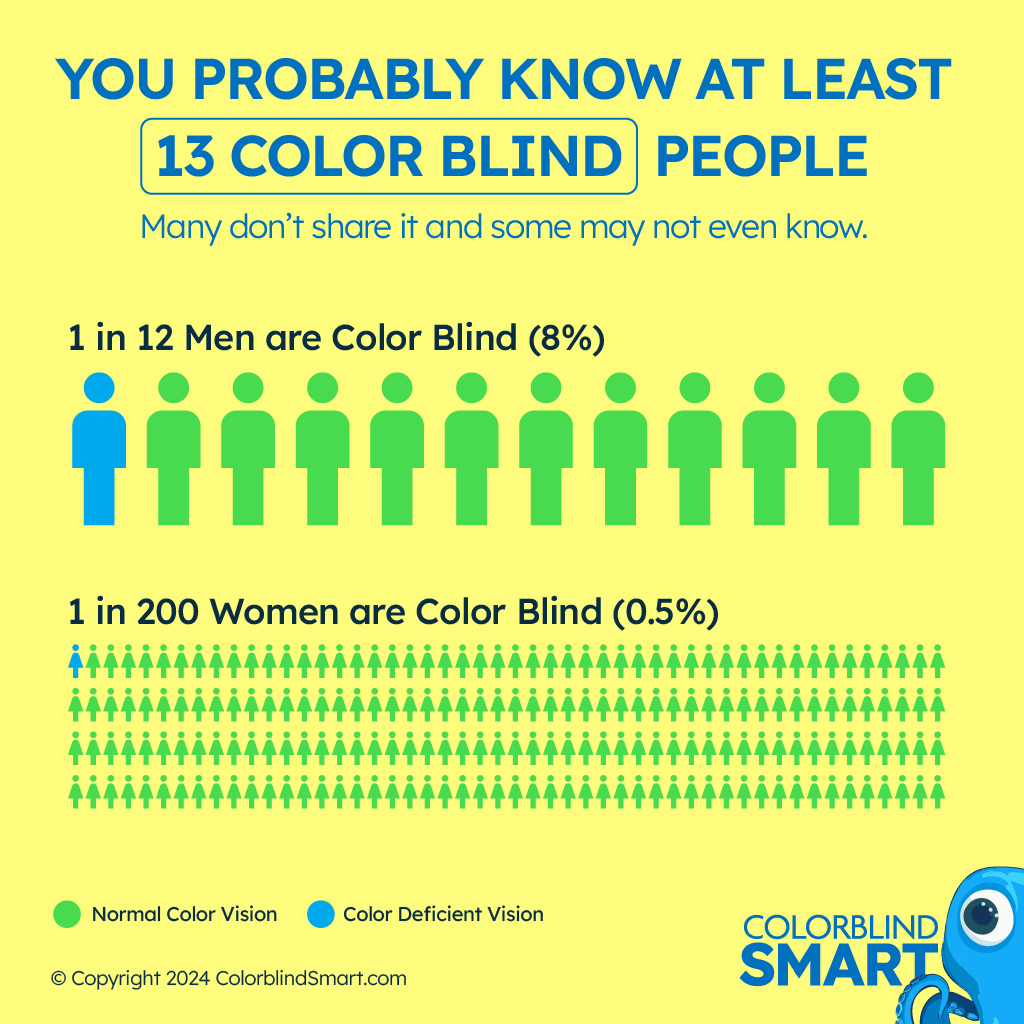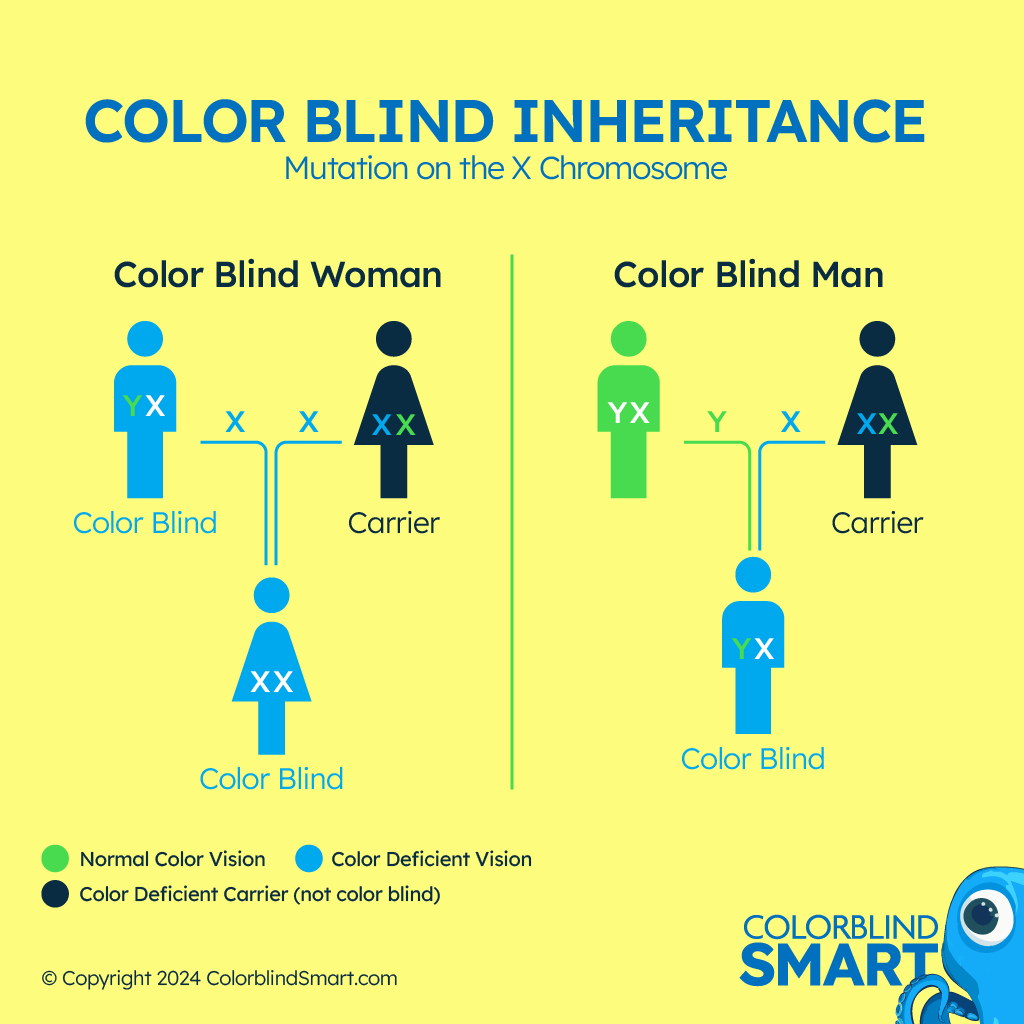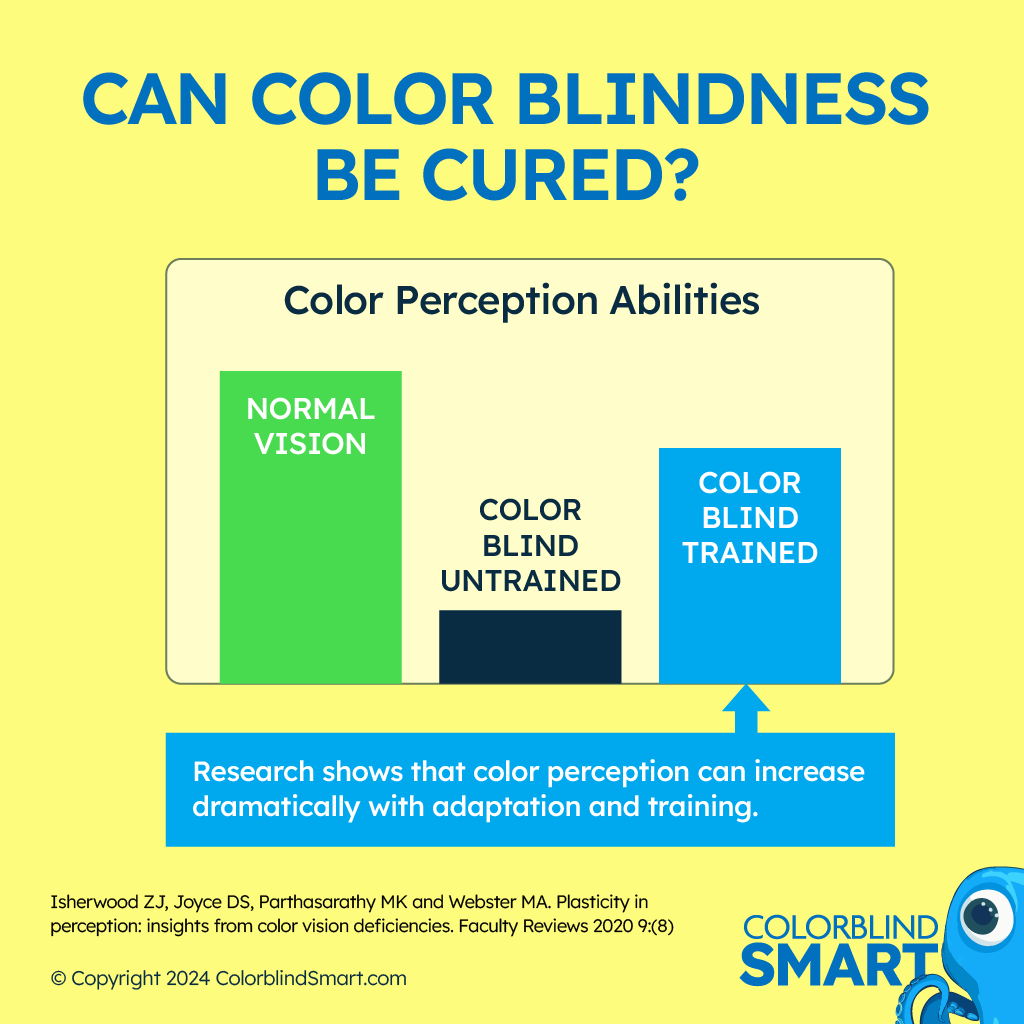11 Interesting Fun Facts About Color Blindness
Maybe you’ve thought that color blindness means seeing in black and white or simply mixing up reds and greens, but there is much more to it than that.

I was born red green color blind and I’ve learned so many interesting facts about this fascinating condition. Color blindness (or color vision deficiency) can range from mild confusion between certain hues to a complete inability to perceive color. Below are 11 interesting fun facts about color blindness that might surprise you!
1. You Probably Know at Least 13 Color Blind People
Color blindness is more common than you might realize. Approximately 8% of men and 0.5% of women have some form of color vision deficiency. If you do the math in a typical population (like a school, workplace, or neighborhood), it’s likely you know around 13 or more color blind people. Because I tell people about my color blindness I often become aware of others who share it. But many color blind people don’t share it and others might not even be aware they have a deficiency. Because certain forms are mild, many individuals simply assume everyone sees color as they do. It often takes a classroom color test or a workplace medical exam for them to find out.
2. Color Blindness Is 16x More Common in Men
The X chromosome carries many color vision genes. Men inherit one X chromosome (from their mother) and one Y chromosome (from their father), while women inherit two X chromosomes. If there’s a defect on the X chromosome in a man, there’s no backup. This explains why color blindness is 16 times more common in men than in women. A woman with one affected X chromosome can still rely on the other healthy one, making her a carrier without showing any symptoms. It is possible for a woman to be color blind if both X chromosomes carry the mutation.
3. Color Blindness Often Skips a Generation

Because of its linkage to the X chromosome, color blindness can appear to skip generations. A woman with a defective color vision gene might not be color blind herself (if her other X chromosome is normal), but she can pass the gene to her son, who then exhibits color blindness. The pattern can skip from a grandfather to a grandson through a mother who is a carrier but doesn’t express the condition fully. This happened in my family. My mother was a carrier but nobody knew it until my brother and I were diagnosed. It appears to have skipped at least two generations in our case.
4. Almost Nobody Sees in Black and White
A widespread myth is that all color blind individuals see only shades of gray. In reality, complete color blindness, known as achromatopsia, is extremely rare. It only affects a tiny fraction of those with color vision deficiency. Most people with color blindness have red-green or blue-yellow variations, which don’t eliminate color perception but alter how certain hues appear. Someone like me with with red-green color blindness might see reds and greens as muddied or similar. Only in extremely rare cases do people see the world in true monochrome.
5. Red-Green Color Blindness Affects Many Other Colors

Red-green is the most common form (99% of color blind people), but it doesn’t limit itself to just confusing red and green in isolation. Because many other hues (oranges, browns, and purples) are blends containing red or green components, these colors also become hard to distinguish. For me, bright orange fruit looks closer to yellow, and purple flowers are often difficult to distinguish from blue ones. The overlap makes everyday activities like matching clothes, reading traffic lights, or telling if fruit is ripe more challenging, pushing many people to develop various strategies to try to overcome this condition.
6. Some Very Famous People Have Been Color Blind
History is packed with notable figures rumored or confirmed to be color blind. While not every report is verified, well-known examples include artist Vincent van Gogh and Mark Twain. Contemporary figures like Mark Zuckerberg have also been reported to have red-green deficiencies; some speculate that’s one reason he chose a predominantly blue palette for Facebook’s branding. Color blindness didn’t stop these individuals from excelling. Despite being color blind I was able to earn a degree and land a job in the field of graphic design. One of my professors was color blind yet taught painting at a collegiate level.
7. Color Blind People Were a Valuable Asset in World War II
During World War II, color blind individuals sometimes helped spot camouflage that people with typical color vision missed. Military forces often relied on subtle color patterns to hide equipment or bases. Because color blind individuals focus on brightness, texture, and contrast more than hue, they could perceive irregularities that tricked others. Their unique perception served as an unexpected advantage in specific reconnaissance and scouting roles, showcasing that color vision deficiency can offer surprising benefits.
8. Color Blindness Can Be Acquired
Although most color blindness is genetic, it doesn’t always come from inheritance. Some people develop color blindness due to eye diseases, injuries, or side effects of certain medications. Conditions such as glaucoma or macular degeneration can affect the retina or optic nerve, leading to color perception issues. In these rare cases, the color deficiency might appear gradually. Treating the underlying problem can sometimes stabilize or even improve color perception, but in more severe cases, the damage can become permanent.
9. Color Blind-Friendly Design Is Changing the World
With growing awareness about color blindness, designers and developers strive for accessibility. Websites, video games, apps, and consumer products increasingly have color blind-friendly modes, featuring alternate color palettes or patterns to distinguish crucial information. For instance, many video games offer toggles for red-green or blue-yellow modes, adjusting on-screen visuals to ensure color-based indicators remain readable. This approach benefits not only those with color vision deficiency but also users who find high-contrast visuals easier to read. Some games will alternately incorporate shapes to distinguish different critical elements.
10. Someday There May Be a Medical Cure to Color Blindness
Scientists are exploring gene therapy to correct the DNA mutations behind inherited color blindness. Early experiments on animals have shown promising results, but much more research is needed before human treatments become widely available. Gene therapy uses a modified virus to change the DNA in certain cells in your body and this often makes people nervous. Researchers must be careful to ensure safety and effectiveness.
11. Color Blind People Can Overcome Their Color Blindness!

Though color blindness can’t be “cured” right now, many people learn to adapt and even thrive. I’ve managed to train my brain to perceive subtle differences and use context to identify colors. If you or someone you know are color blind I’d love to share what I’ve learned with you!
I want to help other color blind people to perceive color better. So if you’re interested in learning how to train your brain to improve color perception, sign up for my free email course. Here’s what you’ll learn:
- Three pillars to overcoming color blindness
- How your eyes work (and don’t)
- Critical understanding of color theory
- How to build your mental library
Sign up today! It’s totally free and you can unsubscribe at any time.
Read Next
Here are a few related articles and resources that can help you dig deeper:
Conclusion
These 11 interesting fun facts about color blindness show that while the condition brings challenges, it also sparks innovation and deeper understanding in our increasingly visual world. Whether it’s the prevalence of genetic inheritance or the role color blind individuals played in wartime, color vision deficiency is a topic far richer than most people realize. Knowing more about color blindness paves the way for better empathy, smarter design, and new opportunities to celebrate the unique perceptions that shape how we all see our world.
Last updated: April 04 2025